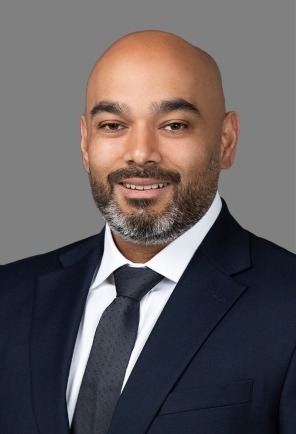Analysis: Private equity funds in UAE rethink strategy ahead of first corporate tax deadline
Private equity firms in the UAE are under pressure to register by September or risk penalties, audits and investor backlash.
The UAE’s transition from tax haven to tax jurisdiction is no longer theoretical. With the first corporate tax registration deadline set for September 30, 2025, private equity funds operating in or from the country are facing direct exposure to a regime they’ve long managed to avoid. The federal corporate tax introduced in 2023 marked a sharp departure from the UAE’s legacy of tax neutrality and for many fund managers, enforcement is now a pressing operational reality.
Since the introduction of the 9% federal corporate tax on taxable income above Dh375,000, UAE-domiciled entities and those with significant operations or management presence in the country have been forced to re-evaluate their legal structures, tax planning strategies and reporting obligations. While the UAE still offers exemptions, including for qualifying investment funds and free zone entities with appropriate substance, the default position under the law is that all juridical persons are within scope unless proven otherwise.
Vishal Sharma, Managing Director and UAE Tax Practice Leader at Alvarez & Marsal Middle East, said that private equity funds had historically relied on “intricate and tax neutral structures.” He explained that both UAE-domiciled funds and offshore vehicles managed from the UAE operated for years with minimal concern for local taxation, in the absence of a comprehensive corporate tax framework.
That landscape has now changed. Under the new rules, UAE fund vehicles are automatically treated as taxable persons unless they qualify for exempt status or are considered tax transparent, such as unincorporated partnerships. Sharma stated that where these conditions are not met, entities are subject to a 9% corporate tax on income, including capital gains, dividends and carried interest.
He added that even offshore fund structures, such as those domiciled in the Cayman Islands, Jersey or the British Virgin Islands, are at risk of UAE taxation if they have a permanent establishment in the country. “These Funds may still be taxed in the UAE if they have a Permanent Establishment (PE) in the UAE where such funds using UAE based advisors, General Partners (GPs) or family offices inadvertently create a UAE taxable presence for the fund due to place of management being in the UAE,” Sharma said.
This concept of “management and control”, a central pillar of international tax standards, means that where key decisions are made may matter more than where an entity is incorporated. For PE funds relying on UAE-based managers, advisors or operating teams, the risk of triggering a taxable nexus in the country has become material.
Widespread misconceptions risk non-compliance
While large international funds and multinationals have already mobilised legal and tax advisory teams to manage the transition, Sharma noted that many small and mid-sized firms, particularly startups, family offices and SMEs, remain unaware that they are subject to the law. “Small and medium-sized enterprises (SMEs), family-owned businesses and startups are the entities most likely to face non-compliance risks under the UAE CT regime,” he said.
He pointed to a common misperception among free zone companies, particularly those designated as Qualifying Free Zone Persons (QFZPs), that they are fully exempt from tax obligations. “The widespread belief that Qualifying Free Zone Persons are completely exempt from tax filing requirements is another factor that puts them at risk,” Sharma said. “QFZPs must still register, file tax returns and meet all compliance requirements even though they may be eligible for a 0% tax rate on qualifying income.”
In the private equity context, this confusion can be compounded by multi-layered structures involving numerous special purpose vehicles (SPVs), holding companies and dormant entities. Sharma said that funds often mistakenly believe that such vehicles are exempt if they have minimal or no income. “However, all juridical persons are subject to CT registration and compliance obligations regardless of their income and activity level under the UAE CT Law,” he added.
Cost of inaction
The cost of non-compliance goes far beyond administrative inconvenience. Under current rules, failure to register with the UAE Federal Tax Authority (FTA) carries a penalty of Dh10,000. Late corporate tax filings are subject to a fine of Dh500 per month for the first year, increasing to Dh1,000 per month after the first 12 months. Unpaid tax also incurs interest penalties of 14% per annum from the day following the due date of payment.
Sharma confirmed that late payment would attract interest at 14% annually on any unsettled tax liabilities.
But the larger concern, particularly in the context of private equity, may be reputational. “Investor trust in the fund’s management may be damaged by such non-compliances, which they may perceive as a governance failure,” Sharma said. Institutional investors, he noted, place a premium on regulatory alignment, especially when it comes to jurisdictions perceived as emerging financial hubs. “Fundraising efforts may be hampered by this, especially when dealing with institutional investors who place a high value on regulatory compliance and tax transparency.”
In some cases, Sharma warned, non-compliance could also interfere with commercial licence renewals or VAT refund claims, delaying critical operational timelines. For funds seeking exits, capital inflows or LP commitments, these delays could prove strategically expensive.
Urgent steps for fund managers
In practical terms, Sharma said the first priority for fund managers should be to conduct a comprehensive tax assessment of their group structure. This includes identifying all entities that may fall under the scope of the UAE CT Law, mapping out income flows and evaluating the applicability of exemptions or tax transparency. “PE fund managers and portfolio companies that have not yet conducted a tax assessment in light of the UAE CT regime should prioritise a thorough evaluation of their group structure,” he said.
He also advised firms to check that their UAE entities meet the necessary substance requirements to avoid anti-avoidance challenges and establish that management and control are clearly documented where required. Once this assessment is complete, immediate registration and compliance actions should follow.
Sharma noted that the Federal Tax Authority currently offers a penalty waiver scheme for firms that missed the initial registration deadline, provided they meet certain conditions. “For entities already non-compliant and subject to penalties, the Federal Tax Authority (FTA) currently offers a penalty waiver scheme,” he said. “If waivers are not applicable, outstanding fines should be settled promptly to minimise additional late payment penalties.”
As private equity firms chart the remainder of the year, decisions around tax grouping and transfer pricing loom large. On one hand, the Federal Tax Authority allows qualified entities to file a consolidated return under the Qualifying Group Relief. That could simplify compliance and ease intra-group asset transfers. On the other, alternative incentives, like free zone treatment or small business relief, may deliver superior tax outcomes. Sharma highlighted this tension: “Alternative incentives such as the QFZP regime and/or utilisation of small business may result in a more tax optimal outcome in comparison to forming a tax group for purposes of administrative simplification.”
That complexity extends to related-party transactions. The UAE’s Transfer Pricing (TP) framework now aligns closely with OECD principles, mandating that intra-group deals be supported by robust documentation. The FTA’s Transfer Pricing Guide, published in October 2023, confirms that entities must justify related-party pricing through contemporaneous documentation, even if not required to prepare both a master file and local file. Companies trading above Dh40 million with related parties must also include a TP disclosure form with their CT return.
Sharma noted, “Maintaining detailed Transfer Pricing documentation that aligns with the arm’s length principle is essential. PE structures often involve complex related party arrangements which must be priced on an arm’s length basis and substantiated with robust documentation.” A failure to adhere invites adjustments and penalties, that could erase profitability on key deals.
With the UAE already imposing a 15% Pillar Two minimum tax on multinationals from January 2025, firms face a narrowing gap in cross-border planning arbitrage. Sharma said that this will “narrow the tax advantage historically enjoyed by UAE‑based funds,” but it also offers a strategic pivot point: “UAE-based funds can differentiate themselves by leveraging the country’s robust framework, strategic location, and growing network of tax treaties.” He added that CFOs “should focus on demonstrating continuous upkeep with the shift in global policy, transparency and alignment with investor priorities to maintain a competitive edge.”
This tax evolution appears likely to trigger structural shifts. Offshore holding entities may be redirected onshore, not only to benefit from substance rules but also to mitigate PE risk. Sharma said, “Yes, the compliance cycle is likely to prompt restructuring across PE ownership models and offshore‑onshore configurations. Funds may reconsider redomiciling offshore holding companies that lack economic substance or face limited treaty benefits into the UAE. Incorporation of new onshore structures may also become more attractive due to the robust tax framework.”
There are clear signs this is already underway: major free zones have boosted their substance requirements, offering favorable regimes for fund managers and investment advisers. As global tax alignment accelerates, the cost-benefit of traditional offshore setups continues to erode.
Institutional LPs appear to support this shift. Far from being alarmed, many regard the UAE’s move toward corporate tax as the mark of a mature financial centre. Sharma reported that “the implementation of UAE CT is seen by many LPs as a step towards more a certain, stable and mature regulation, which can increase the UAE’s allure as an investment destination.” Still, LPs expect more than warm feelings, they demand evidence of compliance and structural rigour.
This is especially true in the audit trail. Private equity fund managers should be reviewing past transactions like intercompany loans, management fees and profit allocations, particularly those lacking thorough documentation. Sharma warned, “Any historical intercompany loans, management fees or profit allocation transactions that are not properly documented or have limited substance may be flagged for audit.” Addressing these risks through retrospective testing and documentation can reduce future challenges.
As timelines tighten, tax governance is moving from the margins to the center of fund operations. “Funds will need to incorporate tax considerations into their overall governance structures and implement a more robust tax compliance framework,” Sharma noted. That means integrating tax risk into board-level reporting, embedding TP protocols and closely managing any tax-exempt or free zone entities to avoid status loss and the corresponding financial hit.
Looking ahead, firms that get this transition right will enjoy more than just tax compliance; they’ll build resilience and credibility.
This article is an Intellectual Property of Finance Middle East




